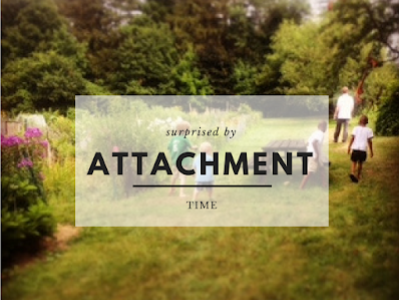–by Nicole Pritchard [originally published on the author’s own blog, Coffee-Colored Sofa on March 2, 2017]
This forms part of a series called “Surprised by Attachment.” This subject became a series because I’ve had way too many failures (or, “learning opportunities”) to fit them into one post. I will not make it a weekly series or anything, though, because you know I don’t really have my stuff together enough for that.
—–
The first day
When we began our two-day journey home with our two new sons, limbs flailed and voices screamed. Within an hour, my seat had been violently kicked one too many times and shoes removed from the terrified offender. By hour three, we had already stopped to use the bathroom no less than sixteen times. Only three of them yielded any evidence the stop had been necessary in the first place, yet all accompanied by dramatic potty dances until the confused moment of truth arrived. By hour six, we had resigned ourselves to the fact that our entire trip would move to the rhythm of the question, “Us going on field trip?,” repeated every forty seconds by one of our sons.
I now realize the behavior that was (at the time) driving me quickly out-of-my-mind was a manifestation of my sons’ anxiety rooted in their early childhood trauma.
Prior to that enlightening road trip, I adhered to a set of ideals that I knew were going to transform me into a super-mom to my sons who came home as older children.
With my ideals, attachment would be a breeze
So I thought.
My first ideal was this: What children need to attach to their caregiver is time. Spending every moment with our children would result in securely attached children.
And because my best attempts to sign our children up for our public school lottery had already failed, I planned to bring my children home and spend time with them. All day. Every day.
…Until about an hour into our drive home, when I began frantically making calls to our school district because I knew my son had to go to school the following Monday. [In my (and in my son’s) dreams!)]
Attachment and time
Slowly, in the years since our drive home, I have processed the relationship between time and attachment in older child adoption. In the beginning of our relationship, I ignorantly believed my child’s behavior was communicating a hatred for me and an unwillingness to attach. Slowly I came to the realization that my child was threatened by me because he had no reason to believe a mother could be trustworthy or capable. He acted the way he did around me because he was facing his worst fear every time he was in my presence.
Eventually I even began to realize that I, in the face of my child’s behavior, also lived in a state of fear and stress.
I had to let go of my ideal
To simplify the situation for myself, here’s what I came up with:
-
I need to do everything in my power to lower my child’s stress level so we build a solid relationship and enjoy attachment even if that means what my child needs most is predictable breaks from me, and
-
I need to do everything in my power to lower my own stress level so my child and I can build a solid relationship and enjoy attachment (while managing my child’s needs first- which is no small feat) even if that means what I need most is predictable breaks from my child.
Every family is different and every child has unique needs. Attachment comes quickly for some families adopting older children. For other children who haven’t yet known safe adults outside of school or group living situations, small opportunities to build trust with caregivers could be key.
Getting long, predictable breaks for children to process their decision to trust a parent for the first time in their lives could also be key.
I always have to remember that it is not my child’s responsibility to attach to me. And it is not my responsibility to try to force attachment in my relationship with my child.
I have to lead the attachment process by being trustworthy to my specific child. In my experience that means limiting our parent/child interactions and focusing on making the limited interactions we have safe and fun- for all of us- and then growing from there.




